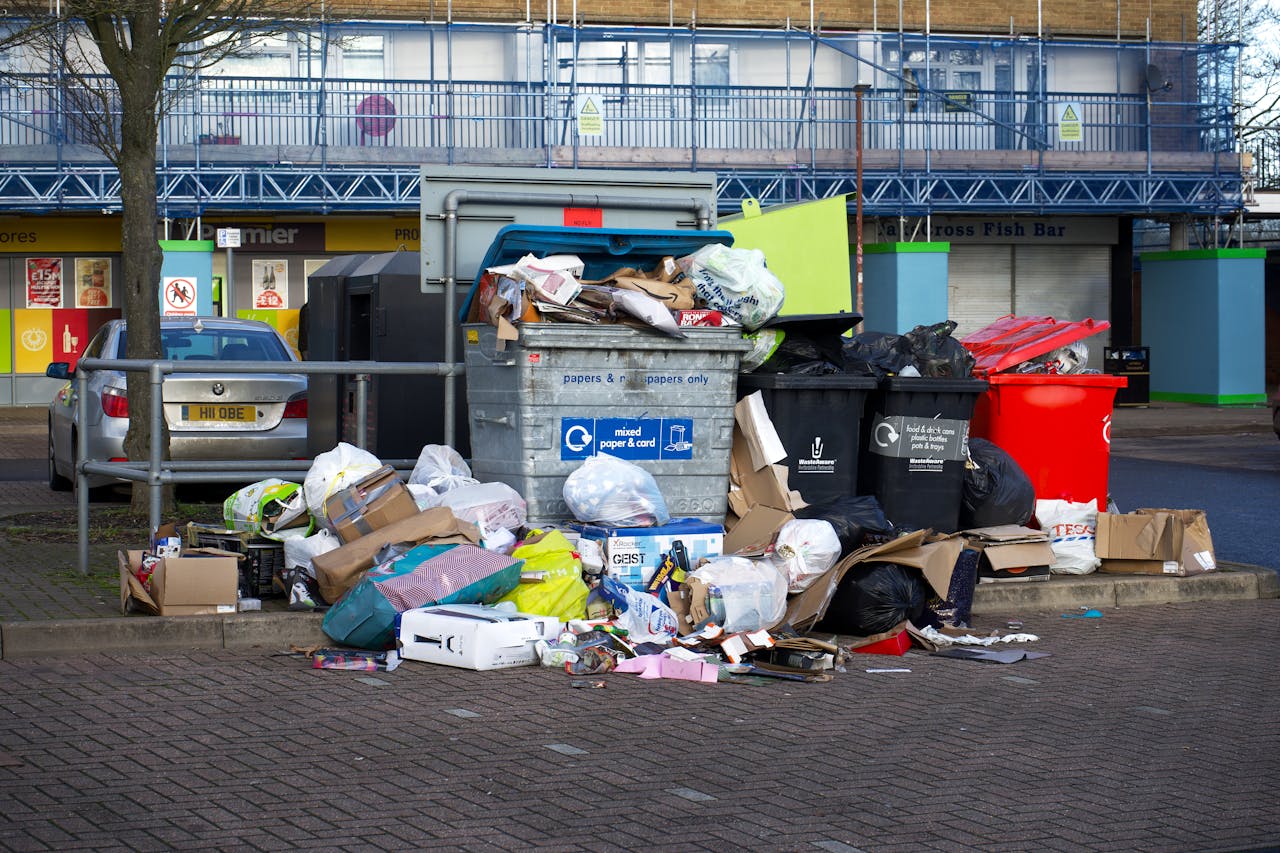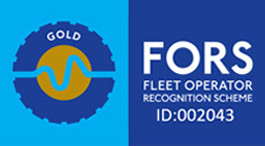Back to Listing
How to Prepare Your Site for Roll On/Off Container Delivery:

Essential Steps for a Smooth Process
Choosing a level and stable surface is the key to ensuring that your container can be safely delivered and placed without complications. Proper planning can save you time, money, and potential headaches.
Before the delivery, you should measure the area where the container will sit. This helps to avoid any surprises on delivery day. Make sure the ground is solid and free of debris to provide a safe foundation for the container.
Consider any access issues, such as overhead obstacles or narrow pathways, that might impede the delivery truck. Understanding these factors will help ensure that the process goes smoothly. Preparing well in advance will set you up for success with your container delivery.
Understanding Roll On/Roll Off Container Delivery
Roll On/Roll Off (RoRo) container delivery is an efficient method for transporting wheeled cargo. This includes vehicles like trucks, buses, motorcycles, and heavy machinery. Knowing how this system works can help you prepare your site effectively.
Roll On/Roll Off (RoRo) Shipping Basics
RoRo shipping is designed for vehicles that can drive on and off the ship. This process involves specialised vessels that have built-in ramps. The cargo can be easily loaded and unloaded using these ramps.
When you arrange for a RoRo shipment, it’s crucial to ensure your delivery site is accessible for large trucks. These ships often carry various vehicles, such as tractors and construction machinery.
For safety and efficiency, the vessels keep cargo securely in place during transit. This method reduces handling time and can be more cost-effective than traditional shipping methods, especially for large loads.
Advantages of RoRo Shipping
RoRo shipping comes with several advantages. Firstly, it allows for quick loading and unloading. You can drive your vehicles directly onto the ship without needing heavy equipment.
This method also minimises the risk of damage since vehicles remain on their wheels. You can transport a variety of wheeled cargo, including agricultural trucks and motorcycles.
Moreover, RoRo services are widely available for international shipping. This makes it easier to send large shipments across oceans without worrying about complex loading procedures.
With streamlined operations and reduced costs, RoRo shipping stands out for transporting heavy equipment. Its simplicity makes it an attractive option for businesses that rely on large vehicles and machinery.
Site Preparation for Container Delivery
Preparing your site for a roll-on/roll-off container delivery is essential to ensure a smooth process. You need to consider accessibility, space requirements, and safety measures. This will help avoid delays and potential damage to both the container and your property.
Accessibility and Space Requirements
You must choose a location that is easily accessible for the delivery truck. The trucks that deliver 40ft containers can be quite large, so ample space is crucial. Ensure that the area can accommodate the truck's turning radius and weight.
Check for overhead obstructions such as low branches or power lines. These can hinder the delivery process.
It's also important to ensure the ground is stable. The surface should be level and firm enough to support the weight of the shipping container. Areas that can pool water or are prone to saturation should be avoided. A dry, hard surface is ideal.
Safety and Compliance
Understanding local regulations is important before the delivery. You may need permits for placing containers on public land or checking zoning laws.
To maintain safety, ensure the area is clear of debris and obstructions. This reduces the risk during the unloading of the container.
You should also assess the ground conditions. If the site is on a slope, there may be additional challenges in delivering the container. Ensure proper drainage to prevent water from pooling around the container after it’s in place.
By following these guidelines, you can prepare effectively for your shipping container delivery.
Planning and Scheduling Your Container Delivery
Careful planning and scheduling are essential for a smooth roll-on/roll-off (RoRo) container delivery. This involves selecting the right time for delivery and coordinating with transport providers to ensure everything runs efficiently.
Choosing the Right Time for Delivery
Timing can significantly impact the success of your roll-on/roll-off container delivery. First, consider peak traffic times in your area. Avoid scheduling during rush hours to minimise delays.
Weather conditions also play a role. Rain, snow, or strong winds can affect safety and accessibility. Aim for a clear weather forecast on the day of delivery.
You should also check for any local events or roadworks that may cause disruptions. Always allow extra time for unforeseen circumstances. Creating a flexible schedule helps you adapt to last-minute changes, reducing stress on delivery day.
Scheduling with Transport Providers
Once you've selected an optimal delivery time, it's crucial to communicate promptly with your transport provider. Provide them with all necessary details such as the delivery location and any access restrictions.
Ensure that your site is ready for the truck. A well-prepared site will facilitate quick unloading and placement of the container. This may include ensuring that the ground is level and clear of debris.
Confirm the delivery schedule with your freight forwarding partner. They can help coordinate the timing and ensure that the right equipment, such as trucks, is available. This collaboration can smooth out any potential issues and enhance overall efficiency during the delivery process.
Documentation and Legalities
When preparing your site for roll on/roll off container delivery, it's essential to understand the documentation and legal requirements involved. Proper paperwork ensures compliance with local regulations, facilitates smooth delivery, and avoids unnecessary delays.
Required Shipping Documents
Several key documents are necessary for shipping containers. First, you need an invoice, which details the contents, value, and specifications of the goods. This document is essential for customs clearance and verification.
Next, the bill of lading is vital. This document serves as a contract between you and the shipping company, confirming that the carrier has received the goods for transport. It also outlines the terms and conditions of the shipment.
Lastly, you may need other documents, depending on your specific delivery requirements. Keeping these documents organised and accessible can minimise delays during the delivery process.
Understanding the Bill of Lading
The bill of lading is one of the most important documents you will deal with. It provides proof of shipment and outlines the responsibilities of both the shipper and the receiver.
It's crucial to check the details listed on the bill of lading, such as the container number, shipping route, and delivery terms. Any errors can lead to complications or delays in receiving your container.
Keep in mind that the bill of lading can serve as a title of ownership. If you're engaging a third party for shipping, ensure that all parties involved fully understand its terms to prevent misunderstandings.
Custom Export Documents and Regulations
If you’re exporting goods, various custom export documents are required. These may include an export declaration and various permits, depending on the nature of the goods.
You must ensure compliance with local and international regulations regarding exports. This includes understanding tariffs, taxes, and additional fees that may apply. Researching specific requirements for your product category will help you navigate this process effectively.
Properly completed export documents are crucial. They facilitate the movement of your container and ensure that your goods arrive at their destination without unnecessary holdups.
Loading and Securing Cargo
Proper loading and securing of cargo is essential to ensure safe transport. Knowing the best methods for loading machinery and vehicles, as well as how to secure them, can prevent damage and ensure compliance with regulations.
Best Practices for Loading Machinery and Vehicles
When loading items like trucks, buses, and tractors, follow these key steps:
- Preparation: Check the loading area for clear access. Ensure the ground is stable and free from debris.
- Use ramps: When loading larger vehicles or heavy machinery, utilise sturdy ramps. This helps avoid accidents.
- Balance the load: Distribute weight evenly. This is particularly important for vehicles like motorcycles and tractors.
- Secure with straps: Use strong straps to hold items in place. Avoid using rope, as it can stretch and compromise security.
- Check height clearance: Ensure that any overhead structures have enough clearance for your load.
Following these practices will help prevent accidents during loading and keep your cargo secure.
Securing Cargo for Transport
Securing your cargo is crucial for safe transport. Here are effective methods to ensure everything stays in place:
- Tie-down straps: Use ratchet straps to secure vehicles and machinery. Ensure they are tight but not so tight that they damage the cargo.
- Wheel chocks: Place these in front of and behind vehicle wheels to prevent rolling during transit.
- Bracing: For larger machinery, use wooden blocks or metal braces to secure items. This will prevent lateral movement.
- Load distribution: Make sure that heavy items are loaded first and placed near the front of the container. This adds stability.
By following these securing techniques, you minimize the risk of damage and enhance transport safety.
Alternative Shipping Options
When considering shipping methods for your goods, it is essential to understand the differences between various options. Exploring alternatives such as container shipping and air freight can impact costs and delivery times for your project.
Container Shipping vs Roll On/Roll Off
Container shipping involves transporting goods in large containers, often using cargo ships. This method is ideal for long-distance international shipping and is generally more cost-effective for larger volumes. Standard shipping containers provide good weather protection and can be easily transferred between different transport modes, such as ships and trucks.
In contrast, roll on/roll off (RoRo) shipping is designed for vehicles and heavy equipment. Vehicles are driven directly onto the ship, making loading and unloading faster. This method suits large, wheeled cargo but doesn’t provide the same level of protection as container shipping. If your goods require strong security and weather protection, consider choosing container shipping over RoRo.
Air Freight Alternatives
Air freight is the quickest option for shipping goods internationally. It is ideal for urgent deliveries and high-value items. However, it tends to be more expensive than other methods, including container shipping and RoRo.
If air freight is outside your budget, consider expedited shipping services offered by some logistics companies. These services can provide a balance between speed and cost. Another option is rail freight for land-based transport, which can be more economical than air freight while still being faster than standard shipping. Always evaluate the urgency of your shipment and its value to determine the best alternative.
Reliable Waste Disposal in London and Essex: At Sharp Skips, we provide dependable skip hire, wheelie bin hire, and grab loader services to meet your waste management needs. Our professional team ensures timely and efficient service. Contact us today to schedule your waste disposal solution.







